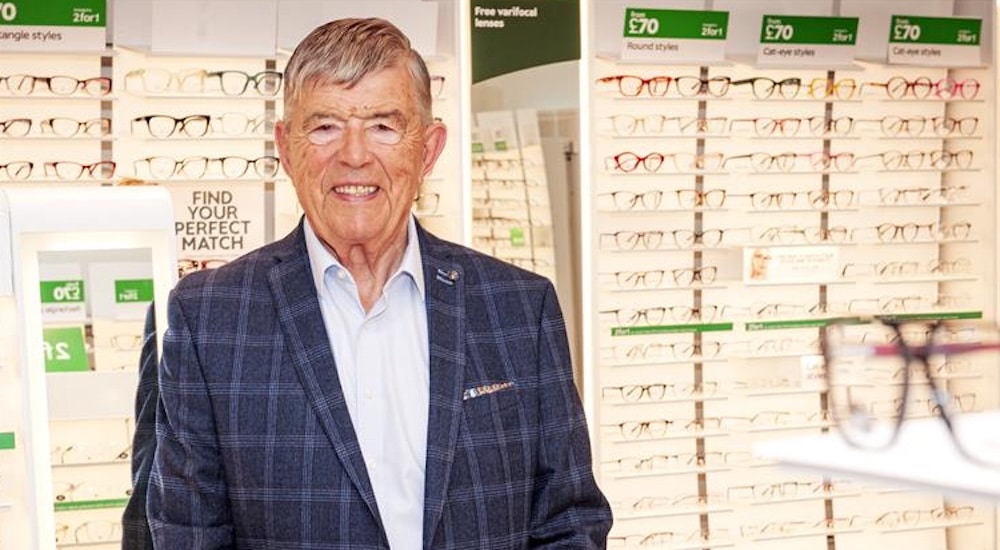A balancing act: the challenges of severe-to-profound hearing loss cases
audiologist
Treating patients with severe-to-profound hearing loss is a rope walk between maximising audibility and minimising distortion, argues audiologist Raúl García-Medina in the July-August issue of Audio Infos UK. And it is a task that throw's the onus on professionals' ability to think creatively.

As referenced in earlier columns, on March 3, 2021 the World Health Organisation (WHO) published the World Report on Hearing (WRH), which was developed in response to the World Health Assembly resolution (WHA70.13), adopted in 2017 as a means of providing guidance for member states to integrate ear and hearing care into their national health plans. It presents epidemiological and financial data on hearing loss based on best available evidence, and outlines available cost-effective solutions, setting the way forward through ‘Integrated people-centered ear and hearing care’ (IPC-EHC). With its 252 pages, it is certainly a double whopper of a document.
The WHO has revised its hearing loss classification, and although still based on audiometric thresholds, the revised system describes the functional consequences for communication likely to accompany each level of severity (see table).
Low income majority
The report also shows that there are an estimated 47.9 million people living with severe to profound hearing loss. This is about 0.6% of the global population (unfortunately, the majority live in low-income and middle-income countries of the world where access to technology and clinicians is scarcer). It may not represent a large number but in many ways, this segment has always been among the more interesting cases we see in our clinics.
Creative thinking
It is to be expected that the rehabilitation process for this category of patients will always present more challenges to both the clinician and the patient than milder hearing losses. As clinicians, our audiological expertise and skills are called upon to ensure that the right assistive strategies and counselling are provided.
In essence, you must think more creatively than during a ‘typical’ hearing instrument fitting. It is particularly with these severe and profound hearing losses cases that the end results of our fittings will always be limited by the processing capabilities of patients’ peripheral and central auditory systems. Not even with the latest technological algorithms at our disposal can we expect to achieve high levels of speech recognition in complex acoustic environments. Clinicians can, however, maximise success with carefully and appropriately selected processing, features and rehabilitative programs.
It is important to highlight that regardless of the severity of hearing loss or the audiological profile, the extent to which hearing loss impacts people’s lives depends on whether it is addressed with effective clinical and rehabilitative interventions, and to what degree patients’ environments respond to their needs. Governments and clinicians ought to understand the need for access to personalised care.
Conventional acoustic hearing instruments are an integral part of the severe and profound hearing loss auditory rehabilitation process, while the process in itself is an enabler into society, participation, and engagement with others. To some of these patients, conventional acoustic hearing instruments are simply a vessel to the acquisition of an implantable hearing device, such as a cochlear implant. This is perhaps an area that more clinicians need to be aware of.
The British Cochlear Implant Group (BCIG) presented a consensus statement on candidacy for cochlear implantation back in march 2017 which is worth perusal. It is very probable that many patients who may benefit from cochlear implants are not being considered for candidacy. Furthermore, bimodal hearing solutions are on the rise and with very good outcomes.
Digital/Analogue
As a clinician, I have lived through the transition from analogue to digital hearing instrument provision and have had my fair share of fittings to the severe-to-profound category. I vividly remember the opposition to digitalisation of devices from the ‘deaf’ community, who had been so used to their analogue ones. They wanted to go back to a less manipulated and louder signal in their acoustic hearing instruments, a more linear signal processing.
Compression brought to the field the ability to sandwich the range of environmental sounds into the significantly reduced dynamic range of the person with sensorineural hearing loss. This non-linear amplification, applied differently depending on hearing rehabilitation process goals as well as on circuitry characteristics, enabled us to address past issues in analogue devices.
Perhaps the most significant advantage with digital instruments has been the multi-channel wide dynamic range compression (WDRC), which was what so-called analogue ‘power junkies’ noticed and disliked. WDRC enabled us to improve audibility across a range of speech input levels, which in turn led to improved speech recognition. Several other features of digital hearing aids have been particularly helpful for individuals with severe and profound hearing losses: digital feedback suppression, frequency transposition, spectral sharpening, connectivity to assistive listening devices, automatic and adaptive directional microphones, and the miniaturisation of the digital processor are just a few. Compression ratios, compression thresholds, and the manipulation of attack and release times have a major impact on distortion perception.
In summary, the balancing act to maximise audibility and to minimise distortion for a severely or profound impaired listener with a narrow dynamic range would be to employ low compression kneepoints, high compression ratios, short or long attack and release times depending on the requirement and multiple channels on which these are adjusted.
And remember, they may be good candidates for cochlear implants.
Source: From the Oval Window, Audio Infos no. 143 July – August.





